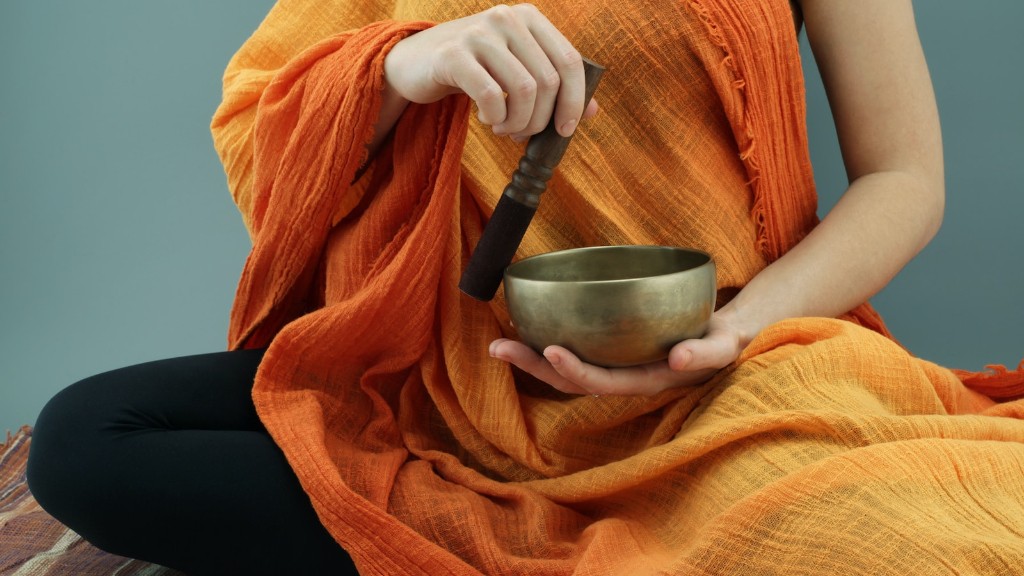In Buddhism, suffering is a term with a complex range of meanings. It can refer to the physical and mental anguish caused by birth, old age, sickness, and death. It can also refer to the psychological suffering caused by desires, attachments, and aversions. In addition, suffering can refer to the karmic consequences of unskillful thoughts, words, and actions. The good news is that suffering is not permanent. Through the practice of the Eightfold Path, it is possible to end suffering and attain nirvana.
In Buddhism, suffering is often defined as the feeling of unsatisfactoriness or dis-ease that arises in response to problems or difficulties in life. It can also be described as a basic dissatisfaction with the way things are. Suffering is seen as a natural part of life, and as something that can be overcome through conscious effort and understanding.
What are the 3 types of suffering Buddhism?
The first level of suffering, “the suffering of suffering,” refers to the pain and suffering that we experience in life. This includes the physical pain of illness and injury, the emotional pain of loss and grief, and the mental pain of anxiety and depression. The second level of suffering, “the suffering of change,” refers to the fact that even when things are going well in our lives, we know that they will eventually change. This can cause us to feel anxious and uncertain, even when we are happy. The third level of suffering, “the suffering of conditioning,” refers to the fact that our happiness is often dependent on external conditions, such as our health, our job, our relationships, and the state of the world. This means that we are constantly at risk of losing our happiness, and that we can never be truly content.
The Buddha’s teaching on suffering is based on the fact that life is full of change and impermanence. This means that our experiences are never permanent, and we will always experience some level of suffering. The Buddha’s goal was to help people understand this and to find a way to end their suffering.
What is the Buddhist saying life is suffering
The Buddha’s first noble truth is most often inaccurately rendered in English as “life is suffering.” The Pali word dukkha, usually translated as “suffering,” has a more subtle range of meanings. Dukkha can refer to the inherent unsatisfactoriness of all conditioned things, or it can refer to the more specific suffering that arises from birth, old age, sickness, and death. The Buddha’s teaching on dukkha is not a pessimistic view that life is nothing but suffering. Rather, it is a realistic assessment of the human condition. The Buddha’s teaching on dukkha is designed to help us see the suffering that is inherent in all conditioned things, so that we can be free from it.
The Three Poisons are the root cause of suffering in the world. They are greed, ignorance and hatred. These three poisons cause us to act in ways that lead to suffering. Greed leads us to desire things that we cannot have or that are not good for us. Ignorance leads us to believe things that are not true. Hatred leads us to act in ways that hurt others.
What are examples of suffering?
Pain and suffering can be difficult to quantify, but it is important to keep in mind when pursuing a personal injury case. Physical pain, impairment, disfigurement, and loss of quality or enjoyment of life can all be considered when calculating pain and suffering. Grief, depression, and anger may also be taken into account. It is important to speak with an experienced personal injury attorney to ensure that all potential damages are considered.
The eight sufferings are:
1) Suffering of birth
2) Suffering of old age
3) Suffering of sickness
4) Suffering of death
5) Suffering of being apart from the loved ones
6) Suffering of being together with the despised ones
7) Suffering of not getting what one wants
8) Suffering of the flourishing of the Five skandhas.
These sufferings are all part of the human condition and are inevitable. We can’t escape them, but we can learn to deal with them in a constructive way.
The first two sufferings, birth and old age, are unavoidable. We are born into this world and one day we will die. We can’t escape these two things.
The next two sufferings, sickness and death, are also unavoidable. We will get sick and we will die. We can’t escape these either.
The next two sufferings, being apart from the loved ones and being together with the despised ones, are also part of the human condition. We can’t always be with the people we love and we will have to spend time with people we don’t like.
The last two sufferings, not getting
How do you let go of suffering?
There is no one-size-fits-all solution for letting go, but there are some tips that can help. First, create a positive mantra to counter the negative thoughts that are holding you back. Second, physically distance yourself from the situation or person if possible. Third, do your own work to heal and move on. Fourth, practice mindfulness to be present in the moment and let go of attachments. Fifth, be gentle with yourself as you go through this process. Sixth, accept that the other person may not apologize or make things right. Finally, engage in self-care to nurture yourself during this time.
The Buddha’s teaching on the Four Noble Truths is designed to help us understand the problem of suffering in its true width and depth. By doing so, we can develop the insight and resolve necessary to make an end of suffering.
What is the root cause of all suffering
Suffering is the outcome of ego and desire. The ego of self and desire of praise creates suffering in each one of our life as long as they exist and increase. By creating a circle of greed and desires, the ego creates suffering. The nature of desire is to grow more as it gets fulfilled, so the more desires we have, the more suffering we experience. To reduce suffering in our lives, we need to reduce our ego and desires.
The Buddha teaches that our reaction to pain is like being shot by a second arrow. We suffer because when we experience pain, we often lash out at ourselves or others. We think that this will make the pain go away. However, it only creates more suffering.
What does suffering feel like?
Suffering is an experience that is negative and unpleasant. It is often associated with the perception of harm or threat of harm. The opposite of suffering is pleasure or happiness.
The kleshas are considered the cause of suffering in yogic and Buddhist philosophy and are to be actively overcome. The five Kleshas are Avidya (ignorance), Asmita (egoism or I-am-ness), Raga (attachment), Dvesha (repulsion and aversion), and Abhinivesha (fear of death and the will to live).
Where does human suffering come from Buddhism
The Buddha believed that most suffering is caused by a tendency to crave or desire things. A person might crave something nice to eat or desire to go on a nice holiday or earn lots of money. Buddhism teaches that through being dissatisfied with their lives and craving things, people suffer.
There are many things in life that can be classified as duḥkha, or suffering. This includes the obvious things like birth, aging, illness, and death, but also things like sorrow, lamentation, pain, grief, and despair. Even something as seemingly innocuous as being around someone we don’t like can be classified as suffering.
The important thing to remember is that suffering is a part of life, and that it is okay to feel it. We should not try to avoid suffering at all costs, but rather accept it as a part of our human experience.
What are the four signs of suffering?
Siddhartha was filled with a sense of urgency to find out what lay at the root of human suffering after seeing a wandering ascetic. He knew that this was the key to understanding the other three sights he had seen.
The four sufferings are birth, aging, sickness, and death. These are sufferings that all beings experience and Shakyamuni wanted to find a way to alleviate them. He eventually found enlightenment and was able to teach others the way to do the same.
What is the spiritual purpose of suffering
Suffering can be a powerful tool that God uses to sanctify us. When we go through suffering, it often causes us to turn our focus inwards and really face the parts of ourselves that we might otherwise ignore. But through that process, God can develop us into better people – people who can love and enjoy Him forever.
The Buddha taught that the way to extinguish desire, which causes suffering, is to liberate oneself from attachment. One way to achieve this is through the practice of mindfulness, which allows us to become aware of our thoughts and feelings without becoming attached to them. By learning to observe our thoughts and feelings without becoming involved in them, we can begin to let go of our attachment to them and the suffering that they cause.
Conclusion
In Buddhism, suffering is often referred to as dukkha. It is defined as an unsatisfactory and painful condition that is caused by our attachments to things that are impermanent. This can include anything from our material possessions to our relationships with others. The Buddha taught that the only way to end our suffering is to let go of our attachments.
Suffering, or dukkha, is a central concept in Buddhism. It refers to the unsatisfactory and impermanent nature of all life. This includes the suffering that comes from birth, old age, sickness, and death, as well as the suffering that comes from trying to maintain a separate, ego-based existence. The Buddha taught that the only way to end suffering is to let go of our attachments and desires.




